What are the top high performance automotive parts of all time?
Answering that is a tall order. People have been hot rodding vehicles for 100 years (give or take a decade). During that time, there have been incredible innovations that have transformed the way our vehicles look, perform, and sound. And now we’re expected to narrow several decades worth of technological breakthroughs, amazing ingenuity, and iconic design down to the 20 most significant parts???
Yep. That’s the challenge we put before OnAllCylinders staffers, longtime automotive journalists, and veteran members of the Summit Racing technical and marketing departments. The first reply we heard was:
“What’s the criteria?”
In this case, these are the Top 20 most iconic parts that changed hot rodding (see title above). We’re talking total game-changers in the annals of our hobby. It’s about historical significance, not necessarily power output or some other tangible measurement.
After tallying votes and considering arguments from our panel, we compiled our list of greatest aftermarket parts of all time—starting with numbers 16 through 20:
#20: Accel DFI
Nowadays, there is no shortage of aftermarket EFI systems—the MSD Atomic, F.A.S.T. EZ-EFI, and Holley Terminator systems are a few. But the aftermarket EFI movement had to start somewhere, and the Accel DFI system is what set the stage in the early 1990s. This standalone system allowed enthusiasts to make fuel delivery and spark/timing changes to accommodate aftermarket mods like bigger cams and larger fuel injectors. The system was developed by John Meaney, who later went on to make a standalone system for F.A.S.T. and help pioneer today’s self-tuning, “plug-and-play” systems.
“Modern ‘plug and play’ systems from F.A.S.T., Holley, and others give the average Joe the driveability and reliability for milder street rods and resto-modded muscle cars.” –Alan Rebescher, PR/Media Relations, Summit Racing Equipment.
Many of these systems can trace their roots back to Meaney and the Accel DFI system.
#19: Chevrolet Performance ZZ350 H.O./ZZ4 Crate Engine
To traditional hot rodders, the thought of dropping a turnkey crate motor into an engine bay may still seem like—well, cheating. But crate engines are a big deal these days, and the ZZ350 H.O. crate engine (later, the ZZ4) jump started the movement.
Nearly everyone on our panel put a crate engine on their Top 20 list. The ZZ350 H.O. crate engine was the first purpose-built, high performance engine backed by a factory warranty. Featuring aluminum cylinder heads, a Z28 high-rise, dual-plane intake, and 245 horses, the ZZ350 offered a viable alternative to building a custom engine.
The ZZ350 H.O. later morphed into the 355-horsepower ZZ4 crate engine, which Chevrolet Performance bills as its original affordable crate engine.
“…the ZZ4 was the first mass produced crate engine that wasn’t used in a production vehicle, and its out-of-the-box performance and economical price helped to ignite the crate engine craze that continues to be popular in the aftermarket. –Patrick Hill, OnAllCylinders contributor
#18: Brodix Aluminum Small Block Chevy Cylinder Heads
Prior to the 1970s, aluminum cylinder heads were largely considered an exotic part meant for drag racing.
And then Brodix came along.
Brodix aluminum cylinder heads can be traced back to the early 1970s—before Brodix was actually a true company. J.V. Brotherton (the BRO in Brodix) designed and cast a new set of aluminum cylinder heads for small block Chevy at the Francis Dix (the DIX in Brodix) foundry.
The Brodix-produced small block Chevy cylinder heads, along with Brodix’s subsequent aluminum castings, helped launch the aluminum cylinder head movement. Now, the average enthusiasts could enjoy the benefits of aluminum cylinder heads without breaking the bank.
“While aluminum heads had been around since the ’60s, they were typically very expensive and hard to find for average enthusiasts. And most aluminum heads didn’t have water passages and were meant for drag racing only. When Brodix offered the first off-the-shelf, high performance, affordable street aluminum head, it would usher in a whole new era of top-end engine performance parts.” –Patrick Hill, OnAllCylinders contributor
#17: Hypertech Chips
The computers have taken over.
OK, not exactly. But in a world where EFIs and ECUs play a prominent role in vehicle performance, it’s a good thing that Hypertech came along. Hypertech chips allow you to manipulate the factory ECU by simply plugging in a chip. This chip manipulates the vehicle’s fuel and ignition curves to maximize power, fuel economy, and other important performance parameters.
Has the Hypertech chip replaced the torque wrench? No. But it did make high performance easy for a whole new generation of enthusiasts.
#16: Weiand 6-71 Supercharger
“From Top Fuel to Pro Street, (the 6-71 supercharger) is the most ubiquitous power adder of all time and is still nearly as popular today. Even the most modern Eaton superchargers can trace their roots all the way back to Philander and Frances Roots and their patent from 1860!” –Jeff Smith, OnAllCylinders contributor
GMC Roots-style blowers were developed for industrial diesels in the 1930s and adapted to hot rods as far back as the late-1940s. When Weiand developed its 6-71 supercharger (based on the GMC 6-71 blower) in the late-1950s, the 6-71 become a symbol for hot rodding and drag racing. Today, the Weiand 6-71 remains one of the most popular, most high-profile superchargers on the market.
Check back for numbers 11-15 soon.

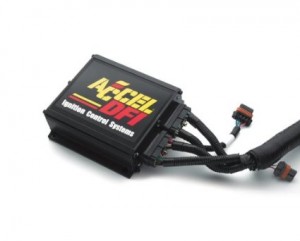
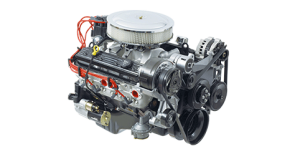
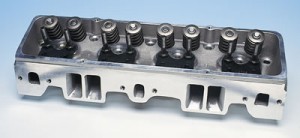
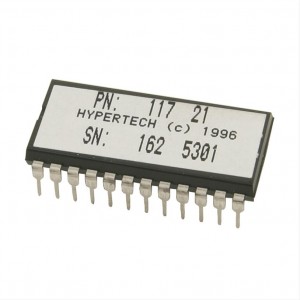
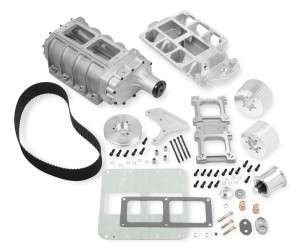
Comments